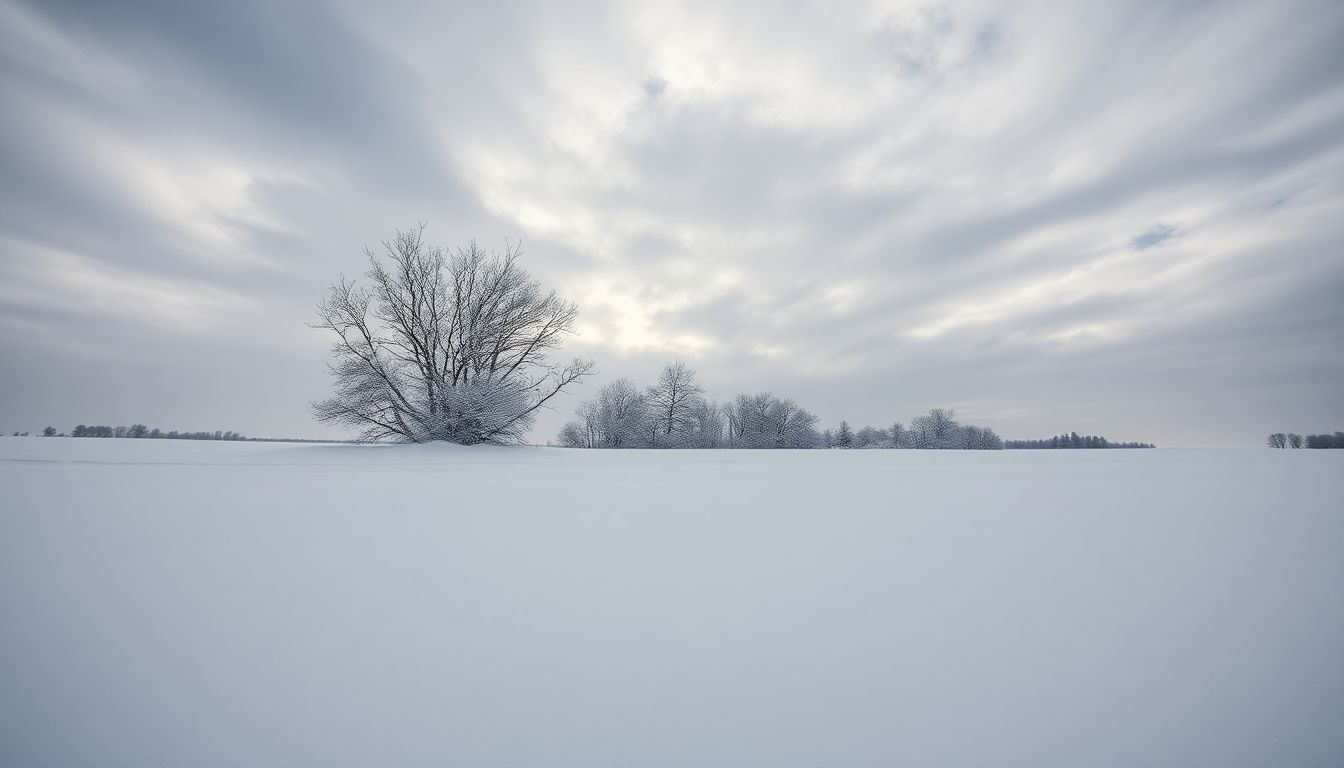
Great Lakes Region Braces for Historic Lake-Effect Snowstorm
Winter is here, and as temperatures drop, the Great Lakes region is gearing up for a monumental lake-effect snowstorm. This storm is predicted to bring heavy snowfall, leading to significant travel disruptions and the risk of power outages. Residents are urged to prepare as the conditions could change rapidly.
Lake-effect snow occurs when cold air moves over the relatively warmer waters of the Great Lakes. This interaction causes moisture to rise, form clouds, and eventually snow falls, often in heavy bands. As a result, communities can see snowfall that varies greatly over short distances, sometimes leading to whiteouts.
Areas such as northern Michigan, upstate New York, and parts of Wisconsin are forecasted to experience intense snowfall over the next few days. Meteorologists anticipate that this storm will last for over 48 hours, bringing substantial accumulations that could change travel and daily life dramatically.
Understanding Lake-Effect Snow
The Science Behind it
Lake-effect snow is a captivating meteorological phenomenon. It forms when cold air streams over the open waters of a lake, absorbing heat and moisture. As this air rises, it cools, causing the moisture to condense and fall as snow. This process is aided by specific wind patterns, which can intensify snowfall dramatically.
Factors Affecting Severity
The severity of lake-effect snow can vary based on several factors:
- Wind Direction: Winds blowing across the lake create the best conditions for heavy snow.
- Lake Water Temperature: Warmer water temperatures increase evaporation and enhance snowfall.
- Air Temperature: Colder air increases the potential for snow accumulation and intensity.
Historical Examples
The Great Lakes region has seen its fair share of historic lake-effect snowstorms. In 2014, areas around Buffalo, New York, recorded over seven feet of snow in just a few days. Such storms often leave lasting impacts on communities, disrupting lives and infrastructure.
Predicted Impact of the Storm
Snow Accumulation Forecasts
Meteorologists project significant snowfall across the Great Lakes. Here are some predicted totals:
- Buffalo, NY: Up to 36 inches
- Syracuse, NY: Around 24 inches
- Traverse City, MI: Up to 30 inches
Travel Disruptions
Travel may be severely impacted as roads become treacherous and air travel faces delays. In past storms, airports have closed, and highways have become impassable, stranding travelers and complicating logistics.
Power Outages
Heavy snow combined with high winds can lead to downed trees and power lines, resulting in widespread power outages. In previous storms, hundreds of thousands have lost power for days, emphasizing the importance of being prepared.
Preparing for the Lake-Effect Snowstorm
Essential Supplies Checklist
To stay safe during the storm, ensure that you have the following supplies:
- Non-perishable food and water
- Flashlights and batteries
- Medications
- First-aid supplies
- Warm clothing and blankets
Home Safety Precautions
Winterizing your home can make a big difference during a storm. Consider:
- Insulating pipes to prevent freezing
- Checking your heating system
- Preparing a generator in case of power outages
Travel Safety Advice
If you must travel, keep these tips in mind:
- Always check the weather report before heading out.
- Equip vehicles with emergency kits, including blankets and snacks.
- Avoid unnecessary trips during peak storm conditions.
Staying Informed and Safe During the Storm
Reliable Weather Resources
Stay updated with credible sources like the National Weather Service and local news for timely alerts about the storm’s progression and safety recommendations.
Emergency Contact Information
Prepare a list of emergency contacts that includes family, friends, and local emergency services. Share this list with your loved ones so everyone knows who to reach out to in case of emergency.
Post-Storm Safety
After the storm, be cautious. Snow-covered areas can hide hazards. Avoid walking near downed power lines and report them immediately to emergency services.
Economic and Societal Impacts
Agricultural Impacts
A heavy snowstorm can hinder agricultural activities, causing potential damage to crops and requiring livestock management adjustments to prevent harm.
Business Disruptions
Businesses may face closures, leading to economic strain on communities and disrupting supply chains. This can impact everything from local shops to larger businesses.
Community Response and Aid
In times of severe weather, community support is crucial. Emergency services and local organizations often band together to provide aid, emphasizing the importance of community resilience.
Conclusion
The lake-effect storm approaching the Great Lakes region is set to bring significant snowfall and various challenges for residents. Preparation and awareness are key to navigating this weather event safely. Stay informed, gather supplies, and look out for each other during this storm. Together, communities can face the winter’s fury with hope and resilience.


